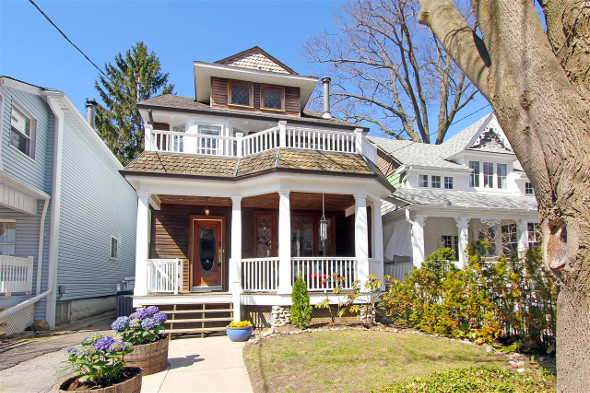Pool Time in Toronto!
https://imaginahome.com/wp-content/themes/osmosis/images/empty/thumbnail.jpg 150 150 Nisha Muire Nisha Muire https://secure.gravatar.com/avatar/09971b406125a2f92a37bf65b08fd3c3?s=96&d=mm&r=gIt’s summertime in Toronto and pool season is open! There’s nothing like a crystal pool of clear and refreshing water to take the edge off those 30-degree days. Whether you want to simply soak for a bit, party, play or exercise, pools are the ultimate backyard boost for those water-babies who love the aqua.
When it comes to choosing the kind of pool to install in your backyard, there are several things to consider – do you want an above-ground or inground version? Will it be vinyl, concrete, gunite or fiberglass? Will it be have a graded depth? Will it be chlorinated or salinated? What will be the surrounding surface? Although your pool company will definitely be able to help you make the best decision for your property, your needs and, above all, your budget, it is good to have an idea of what is available.
Cost
Above-ground pools are are the most affordable of the options listed running anywhere between four to seven thousand dollars while a realistic budget for in-ground pools will be between thirty to seventy thousand. Don’t believe too-good-to-be-true deals for in-ground pools listing them at below fifteen thousand dollars – that price certainly doesn’t include the installation, the liner, the surrounding surface, the landscaping or the accessories such as heaters, covers, etc…
Materials & Longevity
Vinyl refers to the liners used in both above-ground and in-ground pools. In an above-ground pool they usually have to be replaced in about 5 years while they have a slightly longer life in in-ground pools with an average replacement rate after 6 years. Concrete pools are very sturdy and last the longest but will need to be resurfaced every 9-13 years. Gunite is a form of concrete that is also very popular for pools and also lasts a very long time. Fiberglass pools will last around 20 years or longer depending on use and how well it is maintained.
Chlorine or Salt?
Many people are opting for salt instead of chlorine pools now-a-days. Although the salt is actually a naturally chlorine producing variant, it is not as harsh on eyes and skin as regular chlorine. It is also easier to store than chlorine but can damage plumbing and fixtures if not maintained properly.
Surround
The surface surrounding your pool will depend on your overall landscape design. Typically people choose stone or concrete patios for in-ground pools and wood decks for above-ground pools. However, the choice you make will be in-line with your home’s aesthetics and also your budget.


